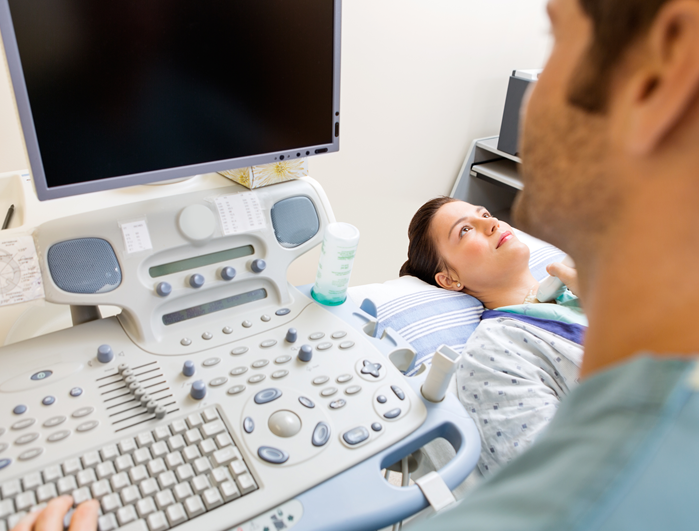Symptoms
Approximately 75% of women do not develop any symptoms; it depends on the size and location of the fibroids. For women who do, the main symptoms can be:
-
Menorrhagia. (Heavy menstrual bleeding). The most common symptom and usually occurs with sub mucosal fibroids.
-
Pain and Pressure. Some women have painful periods or an ache in their thighs or back. Some feel a constant pressure in their abdomen, and if a pedunculated fibroid becomes twisted, acute pain may be experienced.
-
Pain during sex. If a fibroid presses onto the cervix, it can cause pain or rarely bleeding during sex.
-
Bladder and bowel problems. Large sub serous fibroids may press on the bladder or bowel, possibly causing urinary frequency, urgency or constipation.
Treatment
If the fibroids are not causing any problems, they may not require any treatment. If it is necessary, the form of treatment will depend on the size/position of the fibroids, severity of symptoms, woman’s age and whether or not she intends to have children in the future.
-
Conservative Treatment. Involves regular ultrasounds to monitor changes; however no active treatment is undertaken.
-
Drug Treatments. Some drugs, such as Zoladex, reduce oestrogen levels in the blood which can shrink the fibroids and relieve menorrhagia. They can be used before surgery to assist removal of fibroids. Fibroids usually may re-grow following course, and side effects such as night sweats ands hot flushes may occur.
-
Surgical Treatments.
Myomectomy
This is the removal of fibroids using either a laparoscope (key hole surgery), a laparotomy (abdominal incision) or through the vagina using a hysteroscope. The uterus is left intact. The chosen method will depend on the type, size and number of fibroids. You may require more than one type of surgery to successfully remove all fibroids.
Advantages
-
Less invasive, quicker recovery time
-
Womb remains intact
-
Preserves fertility
Disadvantages
-
Fibroids may recur
-
If laparoscopic removal fails, the laparotomy required will prolong the recovery time
-
There is a limit to the size of fibroids that can be removed via laparoscope and hysteroscope
-
Low risk of hysterectomy if uncontrollable bleeding
Hysterectomy
Involves the removal of the uterus.
Advantages
-
Permanent treatment
-
No menstrual Periods
Disadvantages
-
Likely larger incision, meaning longer recovery time
-
Loss of fertility
-
If ovaries are removed, immediate onset of menopause
-
Premature menopause 1%
-
Emergency hysterectomy 1%
Uterine Artery Embolisation
A surgical procedure which blocks the flow of the blood vessels that supply the fibroids, causing them to shrink.
Advantages
-
Less invasive, therefore shorter recovery time
-
Preserves fertility
Disadvantages
-
Can be painful
-
Shrinks the fibroid, does not remove, therefore they recur.
TCRF (Trans-Cervical Resection of Fibroid)
Removes small fibroids through the vagina using a hysteroscope.
Advantages
-
Less invasive, therefore shorter recovery time
-
Preserves fertility
Disadvantages
-
Only removes small fibroids from inside the uterus
-
Fibroids can recur



